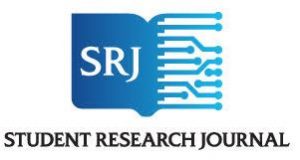Publication analysis
About the publication
Title: Archeota
ISSN: N/A
Website: http://sjsusaasc.weebly.com/archeota.html
Purpose, objective, or mission: Archeota is the publication of the Society of American Archivists Student Chapter at the San Jose State University School of Information. This open source digital publication provides a platform for student voices, and is written by students for students. Archeota publishes original, substantive content on issues and events connected to the world of archives. Articles include profiles of iSchool students in recognition of outstanding achievements, student experiences working in archives, and think pieces related to archives on current events, controversial issues, pop culture, and other topics in the archival field.
The mission of the Society of American Archivists Student Chapter at the San Jose State University School of Information (SJSU SAASC) is to promote archival interests in the academic community, provide a platform for discussing archival issues, and to engage students in professional activities in order to enhance career development. The chapter serves its membership by organizing repository site visits, virtual panel discussions and webinars, providing networking opportunities, and inviting professional archivists to share knowledge about the field.1
Target audience: SJSU SAASC members, and students in the MLIS program (particularly those pursuing the Archival Studies and Records Management career pathway) and the MARA (Master of Archives and Records Administration) program.2
Publisher: SJSU SAASC.3
Peer reviewed? No.
Type: LIS student publication.4
Medium: Online.
Content: The newsletter features editorial pieces by students in graduate archival studies and library science, interviews with practicing archivists, and insights from internship experiences. Students may also share relevant coursework or projects, as well as promote their blogs or other work.5
Frequency of publication: Biannually (twice per academic year, once during Spring semester and once during Fall semester).6
About the publication’s submission guidelines
Location of submission guidelines: http://sjsusaasc.weebly.com/archeota.html
Types of contributions accepted: Think pieces on archives-related events and stories in the news; reflections or advice pieces based on first-hand experience, including jobs, internships, or volunteer work; interviews with practicing archivists; reports on SAASC events and site tours; reviews of archives-related media, such as podcast, blog, book, etc.7
Submission and review process: Contributors should be graduate students at San Jose State University School of Information. You can send an email with your proposal idea to sjsusaasc@gmail.com8
Editorial tone: The magazine-style publication is geared toward graduate students in the information profession interested in archives.
Style guide used: APA.9
Conclusion: Evaluation of publication’s potential for LIS authors
Archeota presents an excellent opportunity for graduate students to publish original content and contribute to discourse in the archival field. The publication serves as a platform for student voices and promotes archival interests in the School of Information community at San Jose State University.10
Information edits provided by Kelli Roisman, SJSU SAASC Chair 2019/2020
Audience analysis
About the publication’s readers
Publication circulation: Archeota is an open-source digital publication.
Audience location and language or cultural considerations:
The audience of Archeota is primarily SJSU SAASC members, and also SJSU iSchool students. The SJSU School of Information is a 100% online program, therefore the student body is widely dispersed in the United States and internationally. The physical location of the university is San Jose, California. As an English-language graduate program, it can be assumed that readers have a strong grasp of the English language.
Reader characteristics: The readership comprises students enrolled in the SJSU School of Information’s MLIS and MARA programs. Readers are those who plan to work (or are already working) with archives and records within a range of settings: libraries, government, corporate, or nonprofit institutions. Potential career paths for students in these programs include archivists, digital archivists, digital asset managers, electronic records managers, digital project specialists, knowledge managers, and technical information specialists.11 12
Knowledge of LIS subject matter: As a publication targeted toward graduate students, knowledge of LIS subject matter may range from an emerging familiarity with archival theories and practices to more significant experience and specific knowledge of the field.
Conclusion: Analysis of reader characteristics and their potential impact on authors
Archeota is produced by and published for students pursuing careers in archives and records, or those who simply have an interest in the field. Contributors have a good opportunity to share their practical experiences of what it’s like to work in a particular setting, professional projects and internships, and reflections, observations, and commentary on archival issues.

